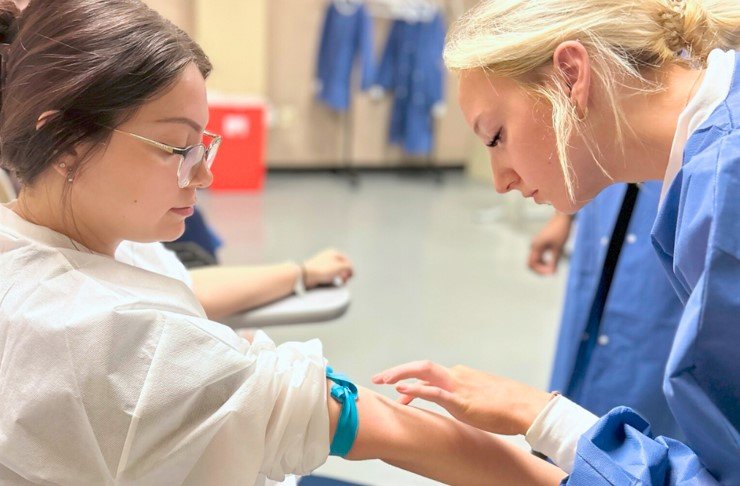Improving Patient Care and Efficiency: Training Nurses on Supply and Equipment Management Technologies in US Hospitals
Summary
- Hospitals in the United States are prioritizing proper training for nursing staff on the latest supply and equipment management technologies to improve patient care and operational efficiency.
- Training programs are being implemented to educate nurses on how to effectively use advanced technologies for inventory management, equipment maintenance, and cost control.
- By investing in training and education, hospitals are equipping their nursing staff with the necessary skills to navigate the complex landscape of supply and equipment management in healthcare.
Introduction
In the fast-paced and ever-evolving environment of healthcare, hospitals in the United States are constantly striving to improve patient care, streamline operations, and optimize efficiency. One key area that plays a crucial role in achieving these goals is supply and equipment management. Properly trained nursing staff who are proficient in the latest technologies can make a significant impact on the overall success of a hospital. This article will explore how hospitals are ensuring that nursing staff are properly trained on the latest supply and equipment management technologies in the United States.
The Importance of Proper Training
Proper training for nursing staff on supply and equipment management technologies is essential for several reasons:
- Efficient inventory management: With the help of advanced technologies, nurses can accurately track inventory levels, monitor expiration dates, and avoid stockouts or overstock situations.
- Equipment maintenance: Training nurses to use equipment management systems can help in preventive maintenance, ensuring that medical devices are in good working condition and reducing the risk of malfunctions.
- Cost control: By understanding how to leverage technology for Supply Chain management, nurses can help hospitals optimize costs, reduce waste, and maximize resources.
- In-house training sessions: Hospitals offer in-house training sessions or workshops to educate nurses on the latest technologies and best practices for supply and equipment management.
- Online courses: Some hospitals provide online courses or modules that nurses can complete at their own pace, covering topics such as inventory control systems, equipment tracking software, and cost-saving strategies.
- Vendor training: Hospitals partner with vendors to offer training programs on specific equipment or software systems to ensure that nurses are proficient in using these tools effectively.
- Improved patient outcomes: Properly trained nurses can focus more on patient care and less on supply and equipment management tasks, leading to better outcomes and higher Patient Satisfaction.
- Operational efficiency: Streamlining Supply Chain processes and equipment management workflows can help hospitals operate more smoothly and reduce overall costs.
- Competitive advantage: Hospitals that have well-trained nursing staff who can leverage technology effectively are better positioned to adapt to industry changes and stay ahead of the competition.
Implementing Training Programs
To ensure that nursing staff are well-equipped to handle supply and equipment management responsibilities, hospitals are implementing various training programs:
Investing in Education
By investing in education and training for nursing staff, hospitals are taking proactive steps to enhance patient care and operational efficiency:
Conclusion
In conclusion, hospitals in the United States are recognizing the importance of properly training nursing staff on the latest supply and equipment management technologies. By investing in education and providing training programs, hospitals are empowering their nursing staff to effectively leverage advanced technologies for improved patient care and operational efficiency. Moving forward, continued emphasis on training and education will be key to navigating the complex landscape of supply and equipment management in healthcare.

Disclaimer: The content provided on this blog is for informational purposes only, reflecting the personal opinions and insights of the author(s) on the topics. The information provided should not be used for diagnosing or treating a health problem or disease, and those seeking personal medical advice should consult with a licensed physician. Always seek the advice of your doctor or other qualified health provider regarding a medical condition. Never disregard professional medical advice or delay in seeking it because of something you have read on this website. If you think you may have a medical emergency, call 911 or go to the nearest emergency room immediately. No physician-patient relationship is created by this web site or its use. No contributors to this web site make any representations, express or implied, with respect to the information provided herein or to its use. While we strive to share accurate and up-to-date information, we cannot guarantee the completeness, reliability, or accuracy of the content. The blog may also include links to external websites and resources for the convenience of our readers. Please note that linking to other sites does not imply endorsement of their content, practices, or services by us. Readers should use their discretion and judgment while exploring any external links and resources mentioned on this blog.
